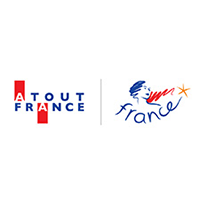Cambodia
A trip to Cambodia wouldn’t be complete without experiencing the Apsara dance. This classical form of dance has shaped Cambodian tradition for centuries and still holds a significant place in Khmer culture today. Don’t forget to attend a Khmer dance performance with a delicious dinner during your visit to Siem Reap, or catch a spectacular show by the Royal Ballet of Cambodia in Phnom Penh, especially if you're lucky enough to visit the city in January during their annual season open to the public.
History
Traditional dances in Cambodia have existed for over a thousand years. In the past, only classical dances were performed in the famous temples of Angkor.
Legend has it that an Indian hermit named Kampu married an Apsara dancer named Mera. Their union produced Kampumera, which later became Cambodia and gave birth to the Khmer people. Initially, dancers were earthly figures who were gradually associated with Apsaras. From the age of eight, they were trained in dance and lived in the temples of Angkor. Dancers were only allowed to leave the palace in the 1950s during royal trips.
The Cambodians believed that the rituals associated with the Apsara dance brought prosperity to Cambodia. Until 1979, the Khmer Rouge took control of Cambodia, executing most intellectuals and artists. In 1981, the surviving dancers participated in the opening of the Phnom Penh University of Fine Arts, where they were able to pass on the tradition to a new generation of dancers.
In 2003, UNESCO recognized the Apsara dance as a masterpiece of the oral and intangible heritage of humanity.
What is an Apsara?
An Apsara is defined as a celestial being in both Buddhist and Hindu mythology. Apsaras are women with supernatural beauty, elegance, grace, and an innate talent for dance. They act as mediators between heaven and earth. They are usually courted by royal musicians, known as Gandharvas. These dancers perform to the music of the Gandharvas to entertain and seduce the gods, as well as the spectators at royal courts. Apsara dancers wear magnificent traditional costumes adorned with floral patterns. Their choreographies are often focused on hand and foot movements while maintaining an arched back.
Dance in Cambodia is characterized by three main categories: classical dance, performed at the royal court for invocations, entertainment, and to honor the gods; folk or traditional dance, which reflects cultural traditions and daily life; and social dances, which are performed during social gatherings.
I. Classical dance developed in the Royal Courts
Initially, classical dance was used to invoke the gods and to pay homage to the royal court. It was only in the mid-20th century that this dance form was introduced to the general public during important public events and for tourists visiting the country. Also known as Robam Preah Reach Trop, classical dance has existed for over a thousand years, gaining popularity during the peak of the Angkor era.
This dramatic art form consists of a language and set of gestures with nearly 4,500 distinct postures or expressions. Throughout history, new pieces have been created, most of which are inspired by mythological tales from the Reamker. The two most commonly performed dance forms are Robam Chuon Por and Robam Tep Apsara.
To the rhythm of the music from the pinpeat orchestra, dancers perform barefoot while wearing headdresses reserved for deities, along with richly embroidered costumes. They execute slow, stylized movements, accompanied by hand gestures through which they tell a story. It takes around ten years of training to become an Apsara dancer. The training conditions for the musicians who accompany the dancers are similar.
Modern Apsara dances may differ somewhat from their ancient forms, largely due to the strong influence of Thai culture that emerged in the 15th century. Since being inscribed by UNESCO, Apsara dances have become increasingly famous among both locals and foreigners.
II. Folk or traditional dances represent daily life
Folk dances, also known as traditional dances, are rhythmical and accompanied by gestures that are less stylized compared to classical dance. They are often performed with a mahori orchestra, which plays string and flute instruments.
Folk dancers wear costumes that mimic the traditional clothing of the hill tribes, farmers, and sometimes peasants. Some folk dances portray love stories or animal tales. In short, these dances reflect the daily life of the people.
Traditional dance is divided into two types: first, ritual dances focused on beliefs and the life of animals, and second, entertainment dances centered around human relationships, work life, and festivals. Some well-known folk dances today include the Trot, Sneak Toseay, Rbam Kom Araek, Robam Kngaok Pailin, and Chhayam.
III. Vernacular or social dances
Vernacular or social dances are often performed at social gatherings. Some examples include the Ram Vong, Rom Kbach, Chok Krapeus, Lam Leav, and Ram Saravan. Some of these dances, such as Rom Kbach, are sometimes inspired by classical dance.
Cambodian social dances have also been influenced by other cultures worldwide, such as the Cha-cha-cha, Bolero, and Madison. These dances reflect the influence of traditional Lao dances as well. Social dances are commonly seen during Cambodian celebrations and banquets.
Some vernacular dances are also accompanied by music played by a pinpeat orchestra, featuring string instruments like the three-stringed violin, and percussion instruments such as the bamboo xylophone and dulcimer.
Where to attend an Apsara Show in Siem Reap?
It is easy to attend Cambodian dance performances in Siem Reap. Khmer dance shows are offered at many hotels and restaurants in the city, such as the Oriental Apsara Restaurant. The shows typically start with dinner around 6:00 or 7:00 PM, followed by a performance of 4 to 5 dances, both classical and folk. Most restaurants offering buffet-style dinners with included performances have menus ranging from 10 to 25 USD.
Additionally, you can also watch performances at venues like the Apsara Theater. Performances are held daily between 8:00 and 9:30 PM. Other performance halls, such as the Angkor Village Theater and Kullen II, also welcome visitors.
The annual Royal Ballet Season in Phnom Penh
Renowned for its graceful gestures and magnificent costumes, the Royal Ballet of Cambodia is a vibrant symbol of Khmer identity. Its performances traditionally accompanied major royal family events, such as coronations and weddings, for over a thousand years. Recently, however, the Royal Ballet of Cambodia has opened its doors to the public during its annual season in Phnom Penh in January. This is a unique opportunity to experience this ancient art form, which is listed on UNESCO’s Representative List of the Intangible Cultural Heritage of Humanity.
For more information, you can visit the Royal Ballet’s Facebook page: https://www.facebook.com/balletroyalducambodge/
And read the UNESCO article dedicated to the Royal Ballet of Cambodia: https://ich.unesco.org/en/RL/royal-ballet-of-cambodia-00060

